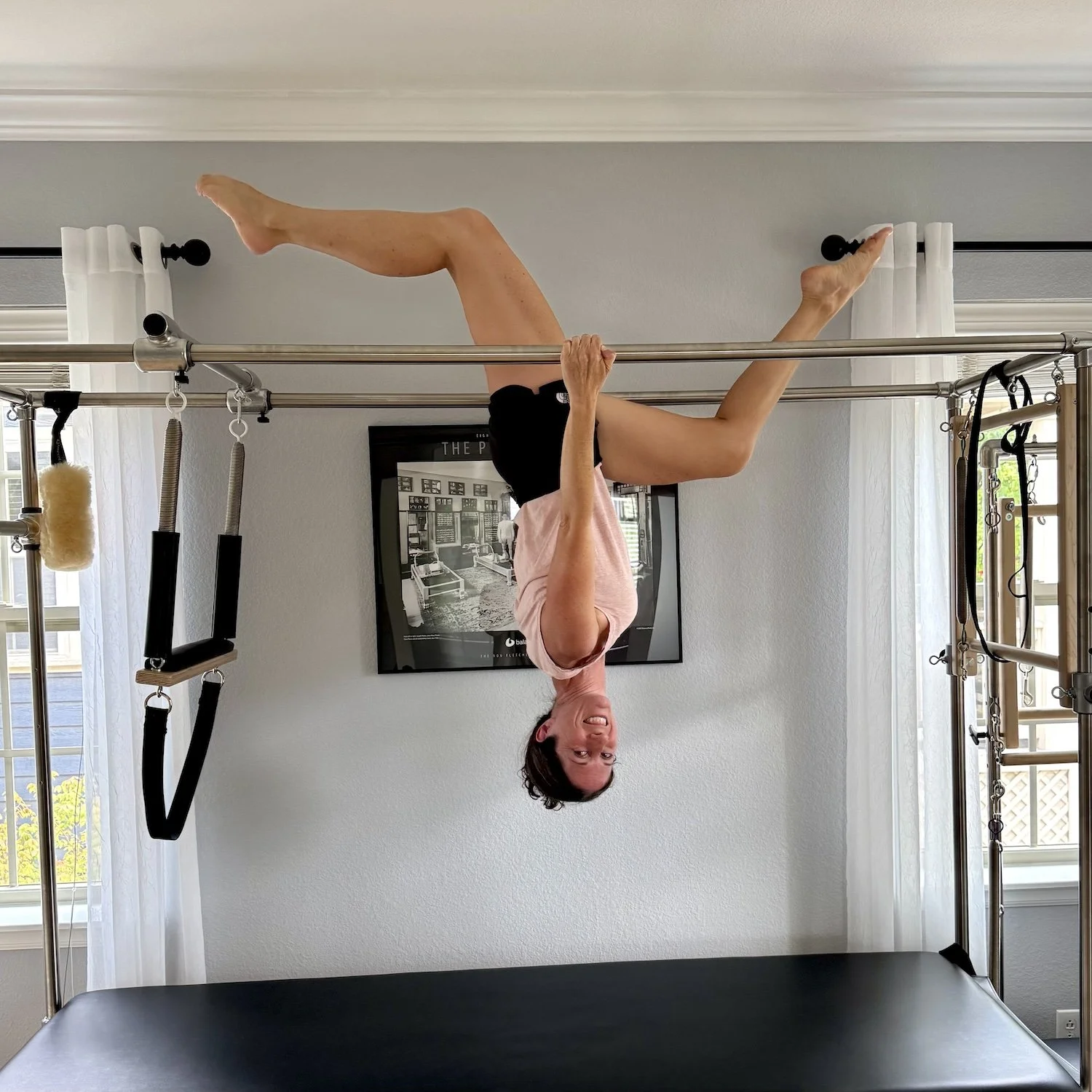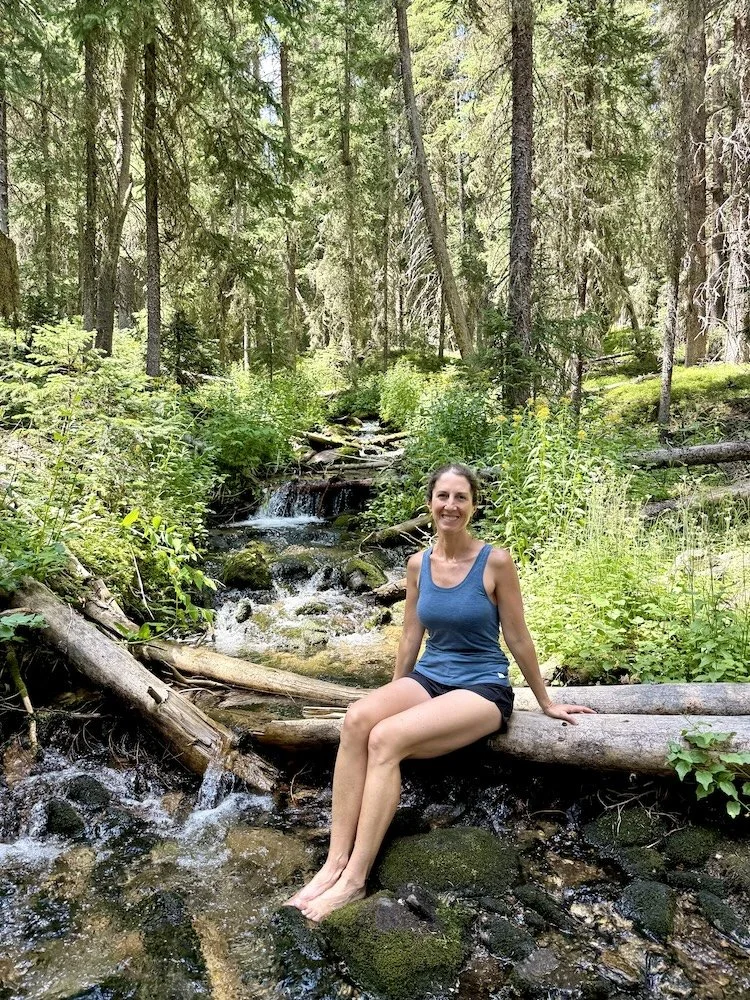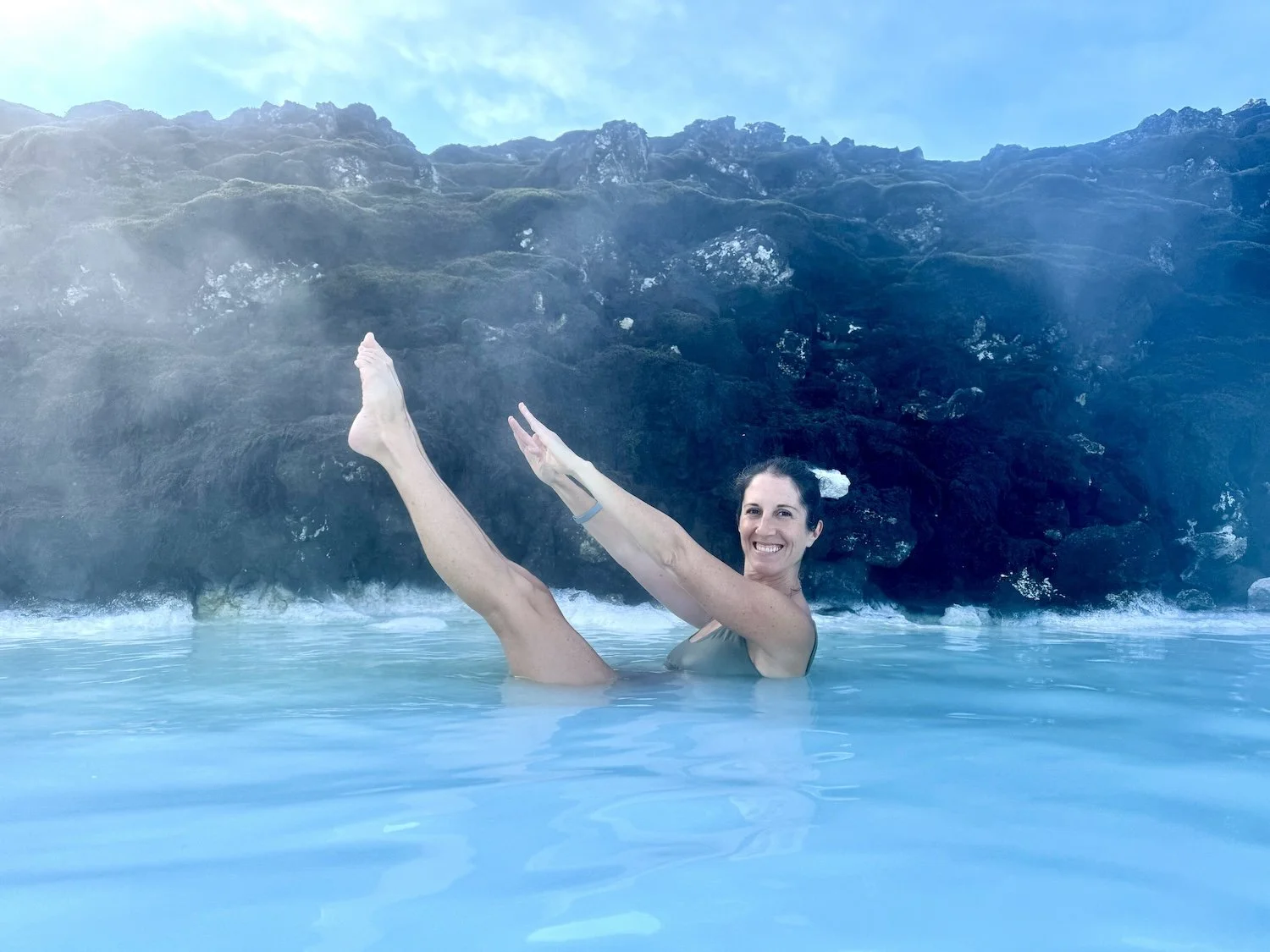Aging Well
Pilates helps me feel decades younger than my actual age.
Who says aging means things have to get worse? As I celebrate another birthday that inches me closer to 50 years of age, I get the chance to reflect on how things are going in my mid 40s compared to my mid 30s. Here’s whats improved!
I’m stronger. My grip strength, my upper body, my legs.
I ski faster and harder with more confidence.
My joints don’t hurt. Chronic hip and SI joint pain plagued by 30s. I’ve had none of it in my 40s. I no longer feel unstable in my ankle nor tape it before sports.
I no longer need glasses! I’ve worn glasses since my teens mainly for driving but post Face Pilates, my vision started improving and when I got my circadian rhythms and light right, I stopped wearing glasses all together in 2023.
I sleep better. So much better! In fact, I’m currently experiencing the best sleep of my adult life thanks to respecting circadian rhythms and getting my light environment right.
I’m more flexible. I can touch my toes and bend my spine (see below).
My posture has improved. In fact, when I was 42, I was mistaken as a student at a European museum, which would place me under the age of 25. I definitely think it was because of the way I hold myself rather than a youthful face.
No more teeth grinding. I traded my mouth guard for getting to the root cause and worked on relaxing the muscles and reducing the nervous system tension that led to clenching in the first place. I worked on resting oral posture and proper tongue placement. I needed a gum graft at age 35 and now, contrary to what I was told was possible, my gum recession has improved.
I no longer need caffeine every morning. I have more energy and energy earlier, eliminating the necessity of caffeine to get started. It feels quite freeing!
More patience. Being patient with my own body and the slow learning curve of almost everyone in Pilates has completely mellowed me out. Breath work, meditation, and HeartMath have helped enormously too. I’m not the feisty Greek girl I once was.
Now some things have certainly declined in the past decade:
More gray hairs
More wrinkles
Saggier skin
But I prefer to focus on how I feel and function, rather than how I look. When I do, I realize that I feel better even though I’m a decade older.
Doing in my mid 40s what I couldn’t do in my mid 30s—lay comfortably over the Spine Corrector.
One of my favorite examples of this is the Spine Corrector. I first laid on Joseph Pilates’ device at age 36 and was so stiff, despite exercising regularly my whole life, that I needed several pillows to pad me so that I could stay on the equipment for arm movements. After a decade of weekly Pilates, now laying on the Spine Corrector feels very mild. In fact, I would like a more intense extension. Joe said that a person is “only as young as his spine is flexible.” Indeed, I will say that with a more flexible spine, I do feel younger.
It’s important to be realistic about aging and to give yourself grace for the natural processes going on in your body. I think having a good mindset about aging is of utmost importance! But while you can be realistic and gracious, I also think you can take preventative measures now to ensure that you age well and minimize the natural deterioration that occurs with additional years.
Sophia’s Top Tips for Aging Well
Pilates is one of the best movement practices to defy aging.
1. Pilates. In my opinion, Pilates is one of the best exercise methods, if not the best, for graceful aging. It addresses the entire body, so nothing escapes its effects. No one thinks about exercising their feet when they’re young, but if you do, you’ll have better balance as you age. Pilates is also gentle on the joints, supports the fascia to maintain a good range of motion, improves alignment and posture, and helps your body feel good, inspiring you to increase your activity in other ways. After teaching hundreds of people Pilates, I can say with certainty that the older adults who practice Pilates regularly move completely differently than people who don’t do Pilates.
2. Attitude. When you have aches and pains, do you immediately blame them on aging or do you take personal responsibility for what you could change to support your body? I find that the people who act like deterioration of the body is normal and expected experience it more. Whether you call it optimism or mild denial, I find the clients who have that attitude that aches and pains can be changed and aren’t inevitable with advancing years are healthier and more mobile.
3. Sleep. During sleep, we release growth hormone and melatonin that repair the body’s tissues. Our brain gets a power washing from the glymphatic system that removes plaques and build-up that lead to dementia and Alzheimer’s. Sleep aids allow you to “sleep” but interfere with the repairing processes so significantly that regular sleep aid use decreases life expectancy. Prioritizing and optimizing your natural, unmedicated sleep enhances rejuvenation. Modern life doesn’t support healthy sleep habits, but if you choose to improve your sleep, your body will have a chance to make the necessary new parts of cells or entirely new cells when needed and that will keep your tissues young.
Being barefoot in nature is anti-inflammatory. Infrared light from the sun increases production of antioxidants in your cells, trees release chemicals that improve your immune system, green leaves reflect even more infrared to you, and earthing allows electrons from the earth to flow into you to quench inflammation.
Earthing with my feet in a creek.
4. Reducing inflammation. There are so many ways to do this from avoiding easily oxidizable polyunsaturated fatty acids (like seed oils, which means avoiding processed foods) or reducing your exposure to toxins. You also reduce inflammation by supporting your mitochondria where a lot of reactive oxygen species (ROS) are made. Some of the best things you can do for your mitochondria are shrinking your eating window so that your fasting window is 12-16 hours long to eating locally and seasonally to getting infrared light from sun and green spaces, which help your cells make intracellular antioxidants. Earthing/grounding also reduces inflammation, so try to spend more time with bare feet outside, or in bodies of water (oceans, lakes, rivers, hot tubs), or wearing specially designed conductive shoes, or use grounding tools indoors.
5. Support your circadian rhythms. Your biology runs on a clock and that clock needs light signals from the environment to run best. It’s time to start thinking of light like a nutrient and trying to get more wholesome, full-spectrum light from the sun, and less junk light from artificial sources. Your eyes and skin need unobstructed sunlight in the morning especially but also throughout the day, avoidance of blue light in the evening, and complete darkness at night. This not only sets your clock but helps you make the best neurotransmitters and hormones (like more serotonin for mood, and melatonin for repair and as an antioxidant).
Drink more water and avoid diuretics.
6. Hydration. Did you know that babies are born with greater than 75% of their body weight as water? By the time a woman is over sixty years old, that could drop down to less than 50%. Studies link hydration to biological aging markers as well as risk for premature death. We benefit from drinking more high quality water, avoiding dehydrators (caffeine, alcohol, certain medications), and reducing our exposure to the microwaves of wireless technology that dehydrate our cells. Don’t wait until your mouth is dry to drink, as we lose our thirst signal with age. Try to drink at least half your body weight in ounces of pure water every day. For each glass of alcohol or caffeine you drink, you need an additional glass of water to balance out the fluid you’ll lose through the diuretic effect.
Time in nature puts me in a parasympathetic state, especially if I hike in less popular places and focus on my breath.
7. Spending more time in a parasympathetic nervous system state. Our lives are go, go, go, stress, stress, stress, and for many of us, our sympathetic nervous system is chronically activated to ensure our safety and survival. We need to put ourselves into settings where we can drop into a parasympathetic state of healing, repair, and restoration. You don’t need a beach vacation to relax, you need tools for a regular, daily practice. I personally find HeartMath, meditation, and breathing techniques to be wonderful tools. I also like to spend less time on a screen, avoid disturbing news stories, and walk for 1.5-2 hours outside in nature every day (sometimes with grounding shoes and without my phone for even more benefit). Don’t worry if you live in a city—parks and green spaces are still beneficial.
Rather than fret over that new wrinkle or gray hair, put your energy and resources into strategies that help you feel and function well as your grow older. The best prevention won’t be quick fixes. Look for long term supports for your body at a cellular level and you can help offset the natural decline that happens with age.
Cheers!








